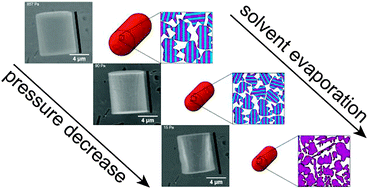Vapour pressure dependence and thermodynamics of cylindrical metal–organic framework mesoparticles: an ESEM study†
Abstract

* Corresponding authors
a
Institut de Chimie Séparative de Marcoule, UMR 5257 CEA/CNRS/UM2/ENSCM, BP17171, 30207 Bagnols-sur-Cèze, France
E-mail:
caroline.genre@cea.fr
Fax: +33 1 69 08 66 40
Tel: +33 1 69 08 58 79
b Max Planck Institute of Colloids and Interfaces, Wissenschaftspark Golm, 14424 Potsdam, Germany
c CEA Saclay, IRAMIS/SIS2M/LCCEF, Bât. 125, 91191 Gif-sur-Yvette, France

 Please wait while we load your content...
Something went wrong. Try again?
Please wait while we load your content...
Something went wrong. Try again?
T. K. Sievers, C. Genre, F. Bonnefond, T. Demars, J. Ravaux, D. Meyer and R. Podor, Phys. Chem. Chem. Phys., 2013, 15, 16160 DOI: 10.1039/C3CP51521D
To request permission to reproduce material from this article, please go to the Copyright Clearance Center request page.
If you are an author contributing to an RSC publication, you do not need to request permission provided correct acknowledgement is given.
If you are the author of this article, you do not need to request permission to reproduce figures and diagrams provided correct acknowledgement is given. If you want to reproduce the whole article in a third-party publication (excluding your thesis/dissertation for which permission is not required) please go to the Copyright Clearance Center request page.
Read more about how to correctly acknowledge RSC content.
 Fetching data from CrossRef.
Fetching data from CrossRef.
This may take some time to load.
Loading related content
